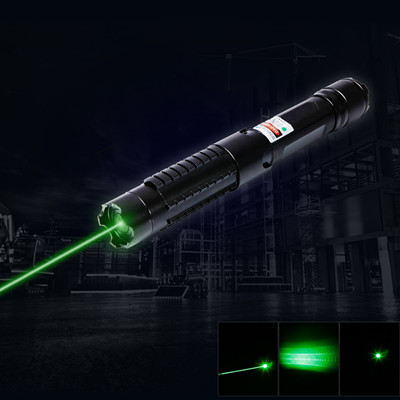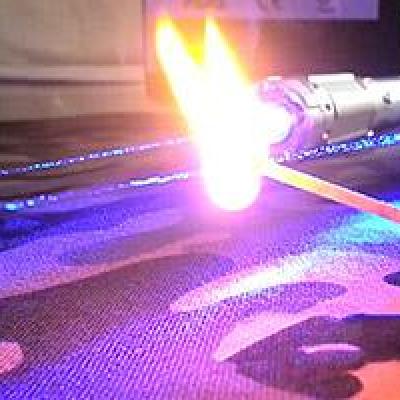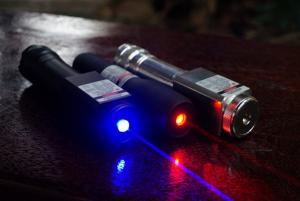Control and control of laser pointers by various countries
Body
What is a laser pointer?
A Laser pointer is a small handheld device similar to a pen. It uses a power source (usually a battery) and a diode laser to produce a coherent monochromatic beam. The laser pointer is mainly used to highlight points of interest by using a strongly colored beam. The typical low-end laser pointer that comes with the key chain is nothing more than a sturdy LED used to ensure safety.
Why control the laser pointer?
The light pen is easy to carry, and some commercially available products have a light range of more than 50 meters, which satisfies the fresh mind of minors and is widely welcomed by primary and middle school students. Normally used laser pointers are generally divided into four levels, below level two (0.4 to 1 milliwatt). As long as the exposure time is not long, it will generally not cause harm to the eyes and skin of the human body; but blue laser pointer above 3-5 milliwatts Larger power can cause human damage. At present, due to lack of supervision, some laser pointers sold around campuses have a power of 100 to 300 milliwatts, which can instantly ignite matches, firecrackers, and paper, and even cause fires. In addition, primary and middle school students lack the necessary self-protection awareness. When playing, a long time exposure can cause damage to the eye retina and skin surface, resulting in permanent retinal damage and vision loss.
According to the degree of damage that the laser system may cause to the human body, its hazard level is classified from class I lasers (no harm) to class IV lasers such as 2000 watt carbon dioxide lasers (which can cut thick steel plates). According to the relevant provisions of the EU EN-60825 standard and the "General Product Safety Regulations 2005", ordinary civil laser products can only be Class I or Class II, Class I laser products have no biological hazards, and the output power of Class II laser products is less than 1 millimeter. watt. The unqualified laser pointer is marked as a Class IIIA laser product with a power of less than 5 milliwatts. It is classified according to the danger level of laser products. Under certain conditions, such laser products may cause blindness and other damage to the eyes. Obviously this Laser products with power levels are not suitable for ordinary civilian laser pointers.

U.S. attitude towards laser pointers
According to the regulations in 21CFR Part 1040.11(b) of the US FDA Center for Equipment and Radiological Health (CDRH), the Green laser pointer is a measurement, leveling, and calibration (SLA) laser product. The CDRH laser class restrictions for SLA laser products, including laser pointers, belong to class IIIa. CDRH also recognizes IEC 60825-1 Level 3R, which is equivalent to CDRH Level IIIa. These CDRH and IEC 60825-1 laser levels are equivalent to laser power no more than 5mW. Laser power exceeding 5mW is very dangerous and may cause potential hazards, such as temporary vision problems or eye damage. Therefore, any laser pointer that emits radiation exceeding Class IIIa/3R shall not be imported into the United States, or sold or promoted in the United States.











Comments